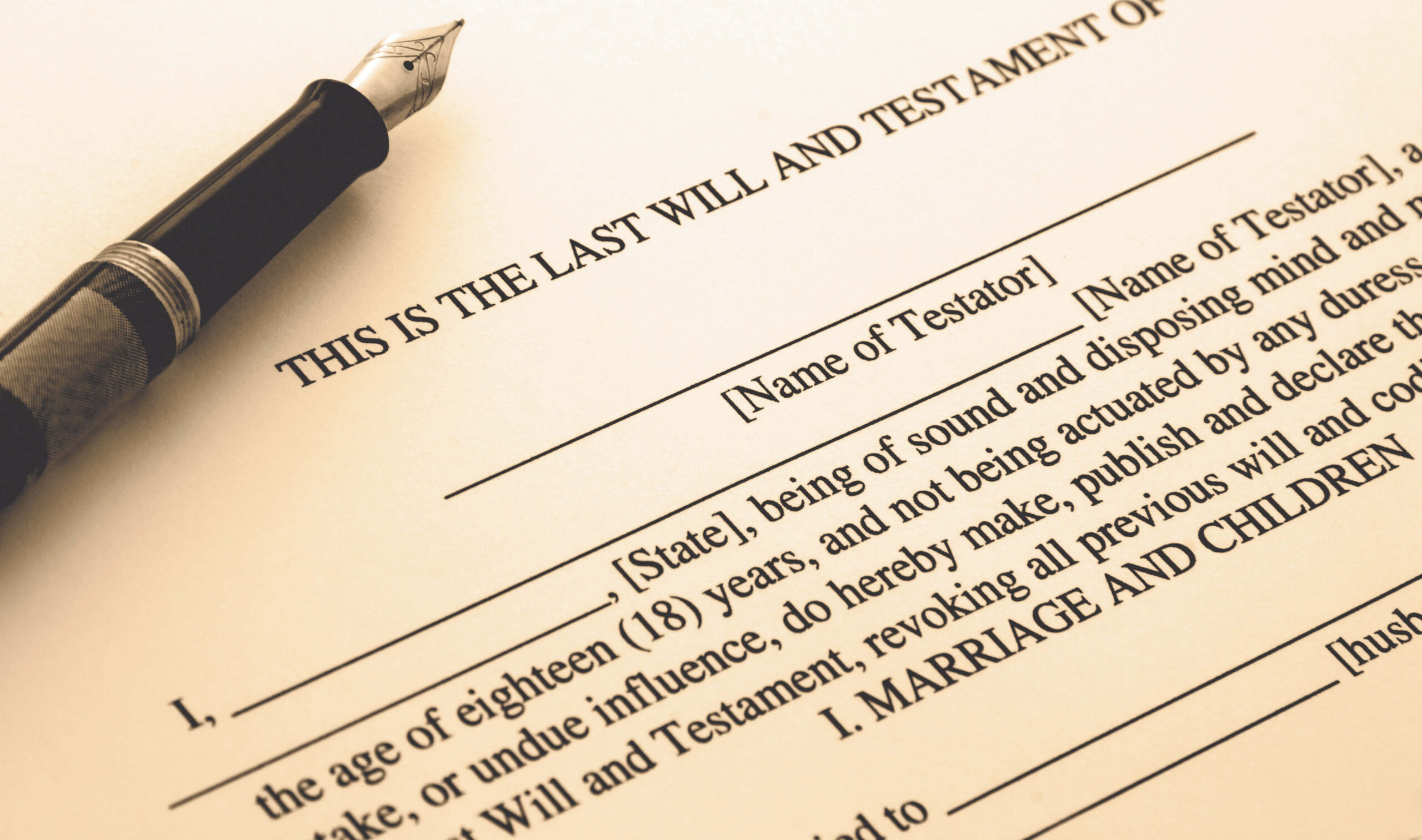Estate Planning & Trusts 1:
“ STRUCTURED ESTATE PLANNING: INSIGHT INTO REVOCABLE LIVING TRUSTS(RLT) WILLS AND INTER VIVOS DISPOSITIONS.“
By Oladipo Fola-Alade
Comprehensive and effectual Estate Planning Structures require much understanding and learning in this area of the Probate and Trusts Law and practice than is actually currently available. This article will not only shed some light for more insight to harness the benefits inherent in this rather latent but all important field, but it is all the more intent upon bridging the gap between the untold losses borne out of the preponderance of ignorance and the much needed knowledge that is required to empower benefactors to position themselves better in order to avail not just their beneficiaries but also themselves the diverse but untapped resources therein.
This includes a better informed administration of the benefactor’s estates inter vivos especially in the event of unforseen circumstances, but it also affords them , superior structured estate planning, returns on investment both for the benefactor and his beneficiaries, and eventually the bequest of a more durable and well propagated legacy to the ultimate advantage of the beneficiaries of the subject benefactors both pre and post humus.
In this discourse we shall review the three (3) basic types of Estate Planning models that are most instrumental and beneficial for the execution or administration of the estates of a benefactor, be he a Testator, Trust Maker or inter vivos Donor of his estates
- a) The Last Will and Testament (LW&T),
- b) The Revocable Living Trust (RLT) and
- c) The inter vivos Plan (IVP).
These 3 could operate separately or interactively and your modus operandi on them are amendable subject to variation as you deem fit within the visiititudes of your life’s circumstances provided you are Well Advised.
THE REVOCABLE LIVING TRUST (RLT)
Let’s begin by examining the Revocable Living Trust(RLT), rather than the Wills ie. The Last Will and Testament (LW&T). We have chosen to prioritise this model because of the paucity of the knowledge in this area of the law and given its invaluable potential in the scheme of Estate Planning Structure. Besides, this method of planning is also the hybrid mode that captures a substantial part of the other two modes ie. The Last Will and Testament and the Inter Vivos disposition.
As a prologue to this treatise, lets consider the significance of this practical but real joke in Dan’s case to help us appreciate but a token of the value inherent in the RLT’s potential especially in these changing times.
” Dan was a single guy living at home with his father and working in the family business. When he found out he was going to inherit a fortune when his sickly father died, he decided he needed a wife with which to share his fortune.
One evening at an investment meeting he spotted the most beautiful woman he had ever seen. Her natural beauty took his breath away. “I may look like just an ordinary man,” he said to her, but in just a few months, my father will die, and I’ll inherit $20,000,000 (twenty million dollars).”
Impressed, the woman obtained his business card and three days later, she became his stepmother.”
Need we guess how Dan’s anticipated inheritance could be manipulated in the hands of his “new step mother”?
WHAT THEN IS A REVOCABLE LIVING TRUST?
A Revocable Living Trust simply means, a Trust Company (or Special Purpose Vehicle which could include trust deeds, Power of Attorney etc.) created in the life time of the owner/benefactor who is usually known as “THE TRUSTMAKER” which carries all or most of the assets or properties which he/she owns and intends to bequeath to his/her beneficiaries,upon his/her demise , in such a way that the owner is firmly in control during ones life time, but with the assistance of his trustees which could include his solicitors and other relevant professionals.
He is enabled to maximise the investment potential of his assets as well as avoid pitfalls, and eventually still pass on ownership to his/her beneficiaries while also tactfully avoiding, the cumbersome taxes, unforseen rigours and expenses, delays and uncertainties that usually come with probate regulations and processes upon ones demise whether testate or intestate.
Noteworthy is the peculiar feature of this model is that the appointed trustees and mandate of the trust are subject to change at the discretion and prerogative of the Trust Maker for as long as he is alive and in good health as well as sound mental capacity. Hence the trust is said to be revocable and can indeed be revoked especially where the credibility and good faith of such trustees are called to question.
PHASES OF A REVOCABLE LIVING TRUST:
A Revocable Living Trust covers three (3) phases of the Trustmaker’s existence –
a).While the Trust Maker is alive and well,
b). If the Trust Maker becomes mentally incapacitated, and
c). After the Trust Maker dies.
Phase One: THE TRUST MAKER IS ALIVE AND WELL.
While the Trust Maker is alive and well, the trust agreement will have specific provisions allowing the Trust Maker to manage, invest, and spend the trust assets for his or her own benefit.Thus, the Trust Maker will go about his business as usual with regard to assets that have been funded into the trust, except that the Trust Maker will sign as the “Trustee” instead of as an individual. The Trust Maker will also be able to use his or her own Social Security Number as the taxpayer identification number for the trust and file income taxes on FIRS/LIRS or IRS form 1040 instead of form 1041 as the case or jurisdiction may be.
Phase Two: THE TRUST MAKER BECOMES MENTALLY INCAPACITATED.
The trust agreement will also specify one or more procedures to be followed if the Trust maker becomes mentally incapacitated. If the Trust maker is declared to be mentally incompetent or otherwise incapacitated by reason of ill health, accident, old age or other unforseen circumstances and can no longer properly serve as Trustee, then the trust agreement will name a successor “DISABILITY TRUSTEE” to take over the management and investment of the trust funds from the Trust Maker.
The Disability Trustee will then be able to take care of and manage all of the Trustmaker’s finances (assuming all of the Trustmaker’s assets have been funded into the trust) and pay the Trustmaker’s bills.
Phase Three: THE TRUST MAKER DIES
When the Trust Maker dies, the ‘Administrative” or “SUCCESSOR TRUSTEE” will be able to step in and pay the Trustmaker’s final bills, debts, and living taxes NOT death taxes.
The trust agreement will then contain instructions about who will receive the balance of the trust funds after all of the bills have been paid and the Administrative Trustee will distribute the balance accordingly.While also ensuring the passing on of the trust assets to the bona fide beneficiaries, who would’ve been co-directors or trustees in minimal shares in the trust Company hither to, until they are now empowered by the trust.
AVOIDING PROBATE
Since the assets funded into a Revocable Living Trust during the Trustmaker’s lifetime will no longer be owned by the Trust Maker but by the Trustee of the trust, there will be no need for the trust assets to be probated when the Trust Maker dies. Instead, the Administrative Trustee can proceed with settling the trust outside of probate and without incurring unnecessary costs and expenses or any court supervision or interference.
In Dan’s case aforementioned, the sharp practice of his “heart throb” turn step mother, will pose little or no threat at all, if a Revocable Living Trust was in place already and running. Both the trust maker, the disability trustee, Solicitors etc would’ve been collectively well positioned not only to spot a gold digger like her and protect the trust against her nefarious devises and do the all that is expedient within their power to prevent or disable her premeditated nefarious activities.Furthermore would have been empowered to set up a well structured and fortified trust to give the more abundant life to all the concerned stakeholders including the Trust Maker himself as well as his beneficiaries both during and after his life time.
With the benefit of a better understanding of what a Revocable Living Trust (RLT) is, we shall now proceed to check out in our next article a check list of key things you need to include in your RLT structured estate planning to guide you, which you’re not likely to forget in your life time, for its indeed a life line for you and those you need to be a blessing to.
OLADIPO FOLA-ALADE
Prime Counsel – OFCLegal
To Be Continued







